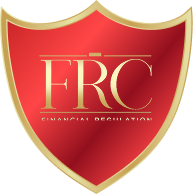Impact investing has gained significant momentum in recent years, driven by growing awareness of environmental, social, and governance (ESG) issues. For investors, it offers a way to not only generate financial returns but also to make a positive impact on society and the planet. For investment advisors, understanding and integrating impact investing strategies into client portfolios presents both an opportunity and a challenge. In this article, we will explore the role of investment advisors in impact investing, the strategies they employ, and the tools they use to balance financial objectives with social and environmental goals.
Impact investing refers to investments made with the intention of generating both financial returns and measurable social or environmental impact. This investment approach goes beyond traditional philanthropy by seeking to address global challenges—such as climate change, poverty, and inequality—while also providing financial value to investors.
Impact investing can take many forms, from renewable energy projects to social enterprises or community development funds. Importantly, impact investing does not necessarily mean sacrificing financial returns. Many investors are discovering that socially responsible investments can deliver competitive returns, and for some, the non-financial impact is just as important as the financial returns.
Investment advisors are key players in guiding clients through the complex world of impact investing. Their primary role is to help clients navigate the challenges of integrating social, environmental, and governance (ESG) factors into their investment strategies, while ensuring that the investments align with their financial goals and risk tolerance.
Advisors typically perform the following tasks:
Before recommending impact investment strategies, an investment advisor must first understand the client’s overall financial goals, risk tolerance, and values. In the context of impact investing, this means understanding what causes or issues matter most to the client, such as renewable energy, social justice, or affordable housing.
A key aspect of this process is helping the client define their "impact goals." These goals could range from contributing to specific social causes to supporting a broader environmental mission, such as reducing carbon emissions. With this information, an advisor can develop an investment strategy that aligns both with the client's financial objectives and their desire for positive societal impact.
Once a client's impact goals are defined, the advisor must then select suitable impact investment opportunities. Unlike traditional investment vehicles, impact investing requires advisors to evaluate not only the potential financial returns but also the social or environmental outcomes of the investment.
The due diligence process for impact investing is more nuanced. Advisors must ensure that the investments selected are aligned with the client's values while also performing well in terms of financial metrics. Some of the factors to consider include:
Impact measurement: Advisors need to assess how the investment measures its social or environmental impact. This could include metrics such as the number of people lifted out of poverty, the amount of carbon emissions reduced, or the number of affordable housing units built.
Fund management: Just as with traditional investments, the advisor must assess the competence and track record of the managers of impact investment funds. Advisors must ensure that these funds are well-managed and transparent in their operations.
ESG criteria: Many impact investments incorporate ESG factors. Advisors need to evaluate how well these investments align with established ESG standards and how they contribute to addressing pressing global challenges.
An investment advisor's role in constructing a client’s impact investment portfolio is critical. Much like traditional investment portfolios, an impact investment portfolio should be well-diversified to manage risk and optimise returns.
Advisors typically balance impact investing with other asset classes to create a diversified portfolio. This might include a mix of traditional investments (stocks, bonds, etc.) alongside impact investments in sectors such as renewable energy, microfinance, social housing, or education. Diversification helps ensure that the client’s portfolio is not overly exposed to one particular sector or impact theme.
For example, an advisor might recommend a combination of:
Green bonds: Fixed-income securities that raise capital for projects aimed at addressing environmental challenges, such as renewable energy infrastructure or climate change mitigation.
Social impact funds: These funds target investments that aim to solve specific social issues, such as affordable housing, education, and healthcare.
Private equity funds with a social mission: Investment opportunities in start-ups or businesses that prioritise social and environmental impact alongside profit generation.
By blending these impact-focused investments with more traditional ones, an advisor can create a balanced portfolio that meets both the client's financial goals and their desire to make a positive impact on the world.
Impact investing involves the same principles of ongoing monitoring as traditional investing, but with an added layer of impact measurement. Investment advisors must track both the financial performance and the social or environmental outcomes of the investments.
Financial monitoring: As with any investment, advisors need to track returns, assess risk, and compare the portfolio’s performance against appropriate benchmarks.
Impact reporting: Impact investors expect to see regular updates on the outcomes of their investments. Advisors may work with fund managers to provide reports that highlight how investments are addressing specific social or environmental issues. These reports may include both quantitative and qualitative data on the impact generated by the portfolio, such as CO2 emissions reduced or communities served.
The impact investing landscape is rapidly evolving, with new investment opportunities emerging and regulations changing. Investment advisors must stay informed about the latest trends, regulations, and best practices in the field. This requires continuous learning and professional development.
In recent years, the demand for impact investing has prompted regulatory bodies in some jurisdictions to introduce standards and frameworks for measuring and reporting on the impact of investments. Advisors need to be aware of these developments to ensure they are compliant with applicable regulations and can provide clients with accurate and up-to-date information.
There are several strategies that an investment advisor can employ when integrating impact investing into a client’s portfolio. These strategies can vary depending on the client’s financial goals, values, and risk tolerance.
Thematic investing focuses on a specific area or theme that is aligned with the investor's values, such as clean energy, sustainable agriculture, or gender equality. By investing in companies or funds that are focused on a particular theme, clients can direct their capital toward addressing pressing global challenges.
For example, an advisor may recommend investing in a fund that supports companies developing renewable energy solutions, or a fund that targets sustainable food production systems.
Exclusionary screening involves screening out companies or sectors that do not meet the client’s values. This might include excluding companies involved in activities such as fossil fuel extraction, tobacco production, or weapons manufacturing. Advisors may use ethical screening tools or ESG rating systems to help ensure that the investments align with the client’s ethical and moral standards.
Positive screening, on the other hand, involves identifying companies or funds that score well on ESG criteria. An advisor may use positive screening to find businesses that are actively contributing to positive social or environmental outcomes, such as renewable energy providers or companies with strong diversity and inclusion policies.
Some investors choose to use their influence as shareholders to encourage companies to improve their ESG practices. Investment advisors can help clients engage with companies on issues like climate change, labour rights, and governance. This strategy can involve direct communication with company management, or it may involve voting on shareholder resolutions at annual general meetings (AGMs).
The demand for impact investing is expected to continue growing as more investors seek to align their portfolios with their values. In the UK and beyond, impact investing is increasingly seen as a way to drive positive change while still achieving competitive financial returns.
For investment advisors, this means that staying ahead of the curve in terms of knowledge and expertise is essential. Advisors who understand the complexities of impact investing, including ESG factors, impact measurement, and portfolio construction, will be better positioned to serve clients seeking to make a difference in the world while also securing their financial future.
The role of an investment advisor in impact investing is crucial to helping clients meet both their financial and social objectives. By understanding the various impact investing strategies and tools, and staying up to date with developments in the field, advisors can offer meaningful guidance to clients looking to make a positive difference in the world. Whether through thematic investing, exclusionary screening, or shareholder activism, impact investing provides an exciting opportunity for both investors and advisors to contribute to a more sustainable and equitable future.
Be the first to know about new class launches and announcements.


Financial writer and analyst Ron Finely shows you how to navigate financial markets, manage investments, and build wealth through strategic decision-making.
